Blog
Beyond Orchestras: 10 Ways to Score a Film Soundtrack
17 Nov '2023
Film and game audio doesn’t have to be all violins and brass – here are 10 ways that modern producers, synthesists and sound designers can get into composition.
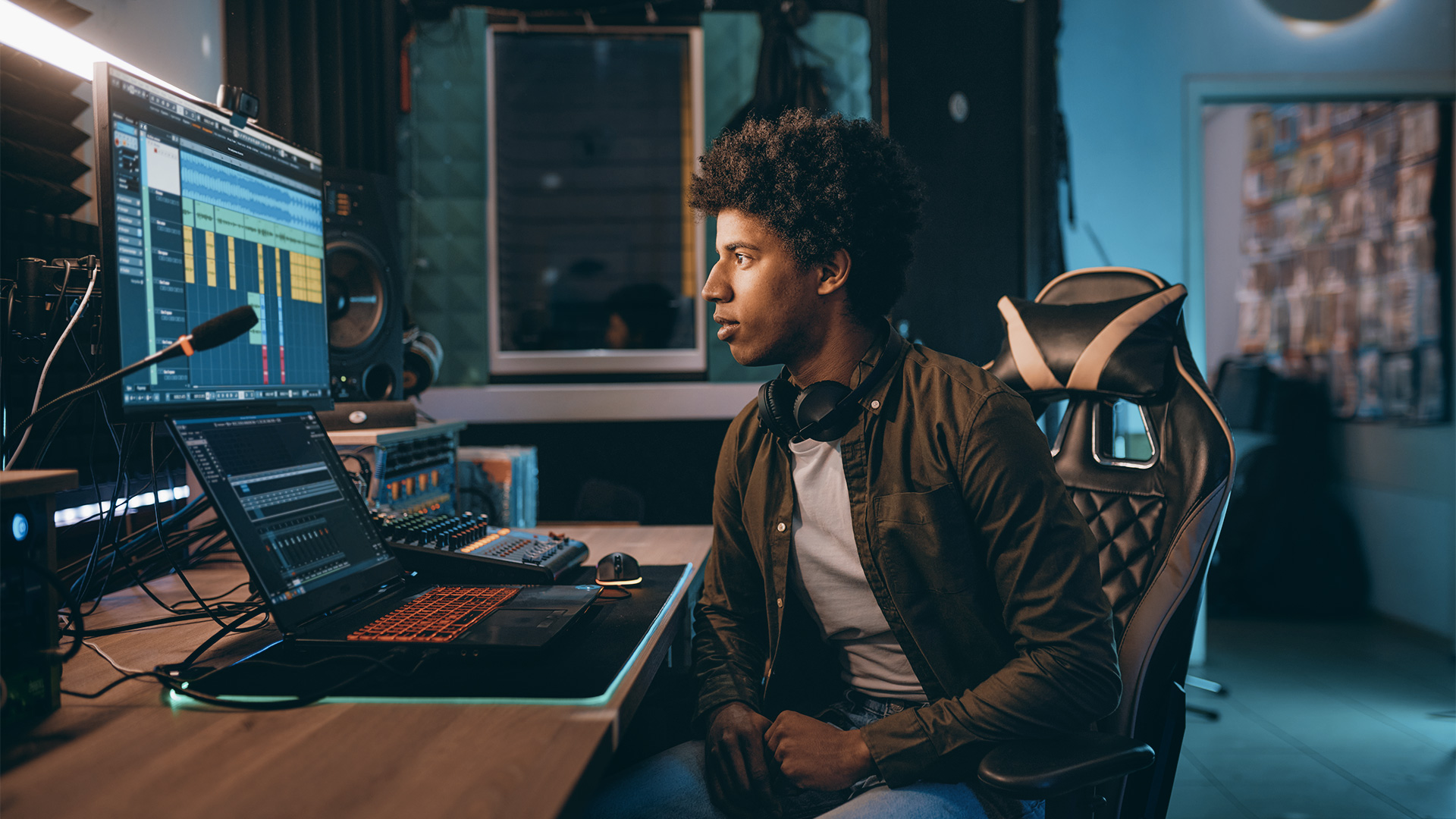
From Psycho to Inception, the word “soundtrack” conjures up thoughts of orchestras with sweeping strings, tension-building stabs, and dramatic swells. But renting a full orchestra isn’t the only way to fly – notable exceptions in movie score include synthwave flicks like Blade Runner and Tron, and musicians like Johnny Greenwood and Trent Reznor have established themselves as offering something different to your standard-issue John Williams score.
In this article, we’ll discuss a few strategies that can push the film score medium beyond the ‘mere’ orchestral, letting synthesists, sound designers, Foley recorders – and yes, Loopcloud users – get their shot at the industry. So here are ten unique ways to score a soundtrack…
1. Score it with synthesizers
Whether scoring in the box with software or getting tangled in a huge array of wires, dials and assorted hardware, creating your sounds from scratch using synthesizers ensures that you’re creating something completely original for your audience.
Rather than relying on presets, searching for mood and atmosphere whilst learning the different controls and range of sounds in synths is part of the appeal to the instrument. Whether it’s the deep rumbles and drones of Hans Zimmer in Inception, to the more sinister pitched work of Disasterpiece in It Follows, synths can literally craft any sound that your imagination can conjure.
2. Use Loopcloud to fuel your score
It’s not just beats, basslines and vocal hooks that make up the contents of Loopcloud – among the search results, you might have seen strings, woodwind and brass sounds that can be dropped straight into a project or twisted more creatively to your liking.
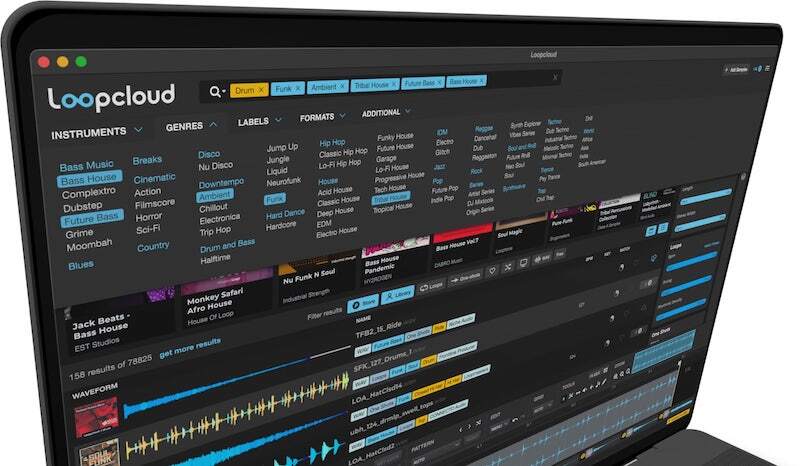
And then there’s the more left-field categories of sound on Loopcloud. You’ll find World sounds, synthetic and organic textures, and soundscapes of every sort. Drones and downshifters sit alongside ambiences and atmospheric beds. Plus with features like sound matching to find similar sounds, and Loopcloud’s onboard editing functions, there’s creativity on tap.
3. Limit your instruments
One of the dangers of ‘having all of the toys’ is not knowing where to start or what to use. Antonio Sanchez, the renowned jazz musician, scored Birdman (2014) using only drums for the entire score, creating an almost improvisational feel for the Oscar-winning film’s descent into fragmented personality and chaos.
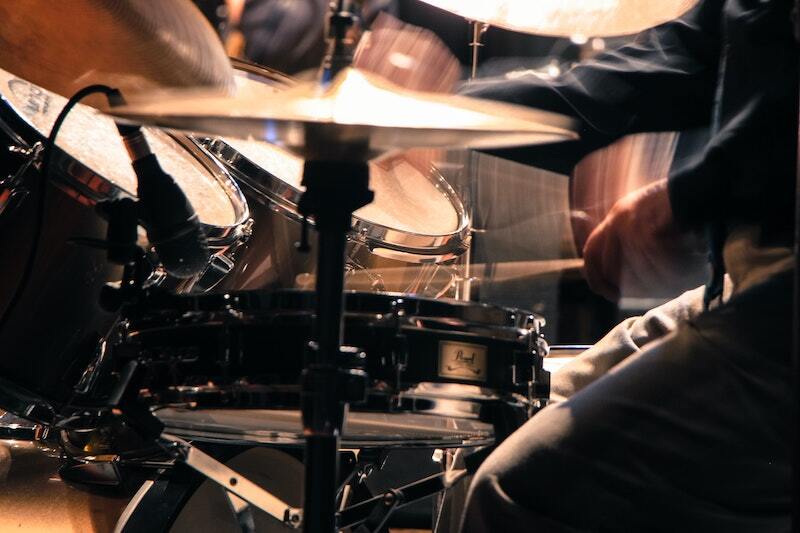
Using splashing and frantic cymbals and off-kilter rhythms, he captured the atmosphere of New York’s bustling theatre scene and personalities. By choosing one single instrument, you avoid the dangers of option paralysis and can delve further into discovering what you can achieve with your chosen musical tool.
4. Modify/build your instruments
Bryan May built an entire guitar out of his fireplace, without the internet to help him. With a huge array of sources of information, including things like Hackerspacers and Instructables, you can take an old piece of equipment and turn it into something truly unique.
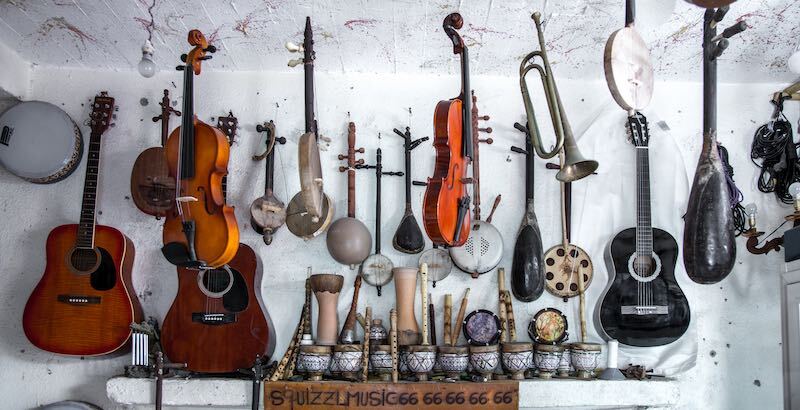
Walter Mair, composer for Squid Games and Till Death, combined a contrabass and hurdy-gurdy to achieve a truly hellish level of low-end drones for the horror flick. Back in 1952, the Baschet brothers created the Crystal Baschet (above), played by rubbing wet fingers onto glass rods as part of the music concrete movement. You can thank them for the inflatable guitar and aluminium piano too. Hunt through car boot and garage sales, find some obscure pieces of kit and try to adapt them into something truly individual.
5. Use alternative objects for sound design
Some of the most interesting sounds in film come from unexpected sources. The iconic lightsaber “thrum” was made using an old cathode TV and a microphone by Ben Burtt, who also made the noises for R2D2 and Chewbacca, whilst the Balrog’s roar in LOTR: Fellowship of The Ring was made by dragging an enormous cinder block across a wooden floor.
More inspiration? Alex Heffes smashed an actual bicycle for his Lance Armstrong film, The Program as part of the orchestration, and Tchaikovsky even let rip with cannon fire as part of his 1812 Overture back in the day. When the synths and samples aren’t doing the business, head into the cupboards and see what you can rustle up that could be sweetened up and used for a voice or hit.
6. Use random searches for inspiration
Sometimes, the flow state doesn't come naturally and writer’s block occurs. When in doubt, throw caution to the wind and dive down a rabbit hole for something completely different. Samples don’t just have to form the bulk of your musical content: try searching for letters, shapes or random dictionary searches of keywords and seeing what appears in any of your libraries could spark a moment of clarity to get out of your rut and back into making something exciting and unexpected.
If stuck, give yourself some options, assign them a number and roll some dice. There are even premade inspiration sets, including ‘Patch The Trading Card Game’ for avoiding the perils of modular synthesis patch fatigue by suggesting changes to make to your setup, signal flow or modulation sources.
7. Use software to create new interfaces
Programs such as MAX MSP and Pure Data allow you to create all sorts of crazy algorithms within their graphical patching and visual language. As a sound generation source, modulation and MIDI workhorse, there’s tonnes of supporting resources and existing materials to help you develop and refine a machine that can take on pesky tasks such as choosing notes or creating rhythms for your score.
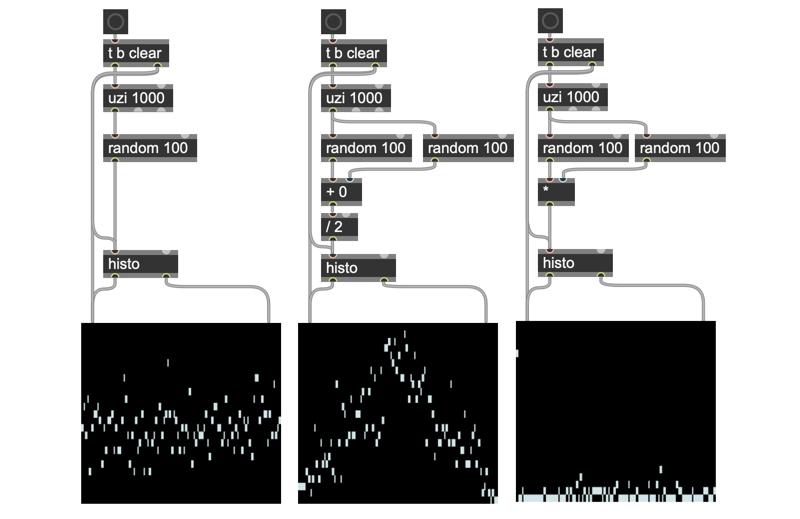 \
\
Emmanuel Spinelli has used the software for several installations and creative projects, including a fish tank and even perspex as a control service. The free Pure Data is a little harder to get to grips with, but provides a wealth of support and choice, whereas the priced MAX allows you to publish your creations as full VSTs with RNBO, which could go on to be used in future projects. Whether you need something to control a parameter, or to be the entire instrument you need, these have you covered.
8. Go for a Sound Walk
Taking a portable recorder and spending the day in an environment similar to the film that you’re scoring (not necessarily possible for those working on the latest space faring epic) and recording the noises around you can provide invaluable insight and sonic experiences that could become part of your soundscape and musical pieces.
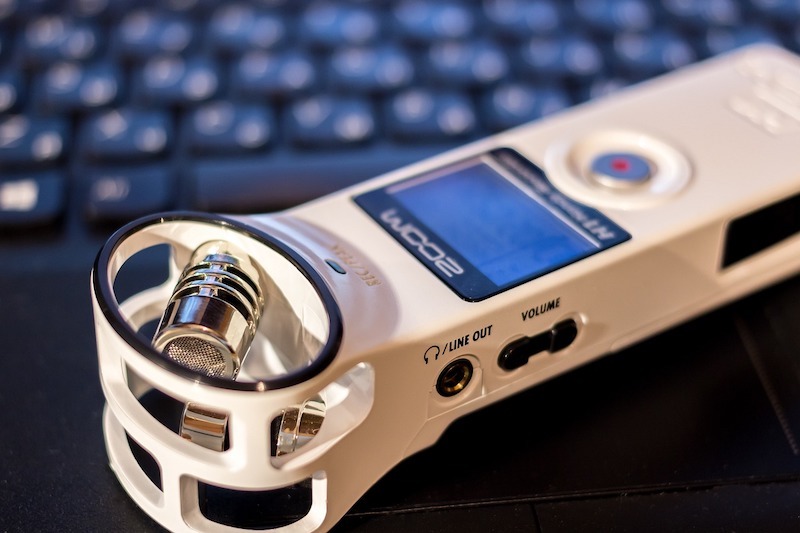
Samples could be incorporated or adapted into unique voices, whilst the frequency ranges and overall ‘fullness’ of the environment could allow you to fill the gap sonically within busier, dialogue heavy scenes. Being disciplined enough to listen and observe some of the minute details of these locations could prove to be the lynchpin around which the rest of a piece evolves from.
9. Score from memory
Odds are you’re a fan of existing pieces of film music and soundtracks. Once you’ve received your brief, make a list of your favourite films similar to the genre you’re making, pick one and then try to recreate the soundtrack with all of the parts you can recall. It won’t be the exact pieces of music, but by doing this you can quickly identify which instruments and techniques you’re reaching for to attempt to match the feel and atmosphere. You may find that the music you create is unique enough to become part of your soundtrack, or at least a useful exercise in discovery. Save these presets and then refine your workflow to use these for scenes and moments that you are trying to achieve for your own film compositions.
10. Avoid Cliche
It’s easy to get sucked in by existing film scores and their conventions when trying to complete your own work. Creating something truly original is much harder than people expect, and film scores and sounds are just as part of these expectations as the locations and plot points of horror or adventure films.
Listen to some of the iconic films in the same genre as you’re working on, and do everything you can to go against these points. Using contrapuntal sound, particularly in thrillers or horror can go a long way to unsettling audiences, allowing you to surprise them with seemingly beautiful music over horrific scenes. A Clockwork Orange, Reservoir Dogs and The Kingsman all use their Counterpoint music brilliantly to shock audiences during particularly intense scenes.
FAQS
How do you score a soundtrack?
Each composer approaches scoring a soundtrack differently. But to score a soundtrack you will need:
- A DAW
- A sample library such as Loopcloud
- Instrument and effect plugins
Many DAWs such as Ableton Live and Logic Pro X support video so you can compose in time with an edited video file.
What makes a good music score?
A good music score heightens the emotion of the action happening on screen without being distracting or generic. The best music scores are also memorable and should transport the listener back to watching the movie when they hear it.
Is there a difference between a score and a soundtrack?
The main difference between a score and a sound track is that a score is wruitten especially for a film, whereas a soundtrack is popular songs that already exist, which are played in the movie. That said, a score can sometimes be called an original soundtrack (OST), so the difference is not always black and white.

